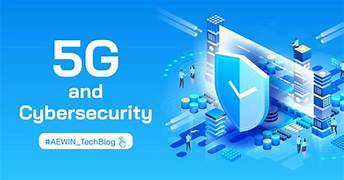5G Technology: Exploring the Cybersecurity Implications
The advent of 5G technology marks a significant leap forward in telecommunications, promising faster speeds, lower latency, and a more reliable internet connection. With the growing reliance on the internet for everything from remote work to healthcare, 5G will enable new opportunities for innovation across industries. However, as with any technological advancement, 5G also introduces significant challenges—especially in terms of cybersecurity. As the world shifts toward a more interconnected digital landscape, securing 5G networks against cyber threats will be paramount.
This article delves into the cybersecurity implications of 5G technology, exploring potential risks, challenges, and the measures that can be taken to ensure the safety and integrity of this new network infrastructure.
What Is 5G Technology?
5G refers to the fifth generation of mobile network technology. It builds upon the foundations laid by 4G, offering faster speeds, lower latency (the time it takes for data to travel from one point to another), and the ability to support more devices at once. The technology promises to revolutionize sectors such as healthcare, transportation, manufacturing, and entertainment, enabling developments like autonomous vehicles, smart cities, remote surgeries, and immersive augmented and virtual reality experiences.
The key features of 5G include:
- Ultra-high speed: Download speeds of up to 10 Gbps, making 5G around 100 times faster than 4G.
- Low latency: Latency reduced to 1 millisecond, allowing for near-instantaneous data transfers.
- Massive connectivity: 5G supports up to 1 million devices per square kilometer, enabling the Internet of Things (IoT) to thrive.
- Network slicing: Allows carriers to create multiple virtual networks tailored to specific use cases or industries.
Despite the immense potential of 5G, the technology’s rollout brings with it several cybersecurity challenges that need to be addressed to safeguard users and industries alike.
The Cybersecurity Landscape of 5G Networks
The deployment of 5G networks raises significant concerns around the security of data and infrastructure. With the increased speed, connectivity, and volume of data being transmitted, 5G networks become more vulnerable to a range of cyber threats. Below are some of the most prominent cybersecurity risks that come with the implementation of 5G.
1. Expanded Attack Surface
5G networks will connect billions of devices, from smartphones and tablets to smart appliances, autonomous vehicles, and industrial equipment. This expanded attack surface creates more opportunities for malicious actors to exploit vulnerabilities in devices, apps, or the network itself. With so many connected devices, a successful attack on one device could have cascading effects on the entire network, leading to data breaches, service interruptions, or even critical infrastructure failures.
Moreover, 5G’s adoption of the IoT means that vulnerabilities in devices ranging from home security cameras to medical devices could be targeted. As IoT devices often lack robust security features, they are prime targets for cybercriminals.
2. Network Slicing and Virtualization Risks
One of the key features of 5G is network slicing, which allows operators to create customized virtual networks that can be tailored to different industries or use cases. While this enables enhanced flexibility and efficiency, it also introduces new risks. If one slice is compromised, it could potentially impact other slices, leading to security breaches in multiple sectors.
Virtualization of the network infrastructure also means that it is not physically confined to a single location. Virtualized environments introduce more opportunities for cyber attacks, as they can be targeted from anywhere in the world. Hackers could exploit weaknesses in virtualized components, such as the software that enables network slicing, to gain unauthorized access.
3. Supply Chain Vulnerabilities
The global nature of the 5G rollout means that the hardware and software used to build 5G networks come from a variety of suppliers, many of which are based in different countries. This creates significant supply chain vulnerabilities. If any part of the supply chain is compromised, the entire network could be at risk. For example, concerns have been raised about the involvement of certain countries or companies in the supply chain, particularly around the use of equipment from vendors that may be subject to foreign government influence or control.
Malicious actors could exploit vulnerabilities in network equipment, routers, or base stations to launch large-scale cyberattacks. These attacks could be highly sophisticated, and the risks associated with untrusted vendors or compromised components could have long-lasting effects on the security of the entire 5G infrastructure.
4. Data Privacy Concerns
As 5G enables faster data transfers, it will result in massive amounts of data being transmitted across networks in real time. From personal data to sensitive business information, the volume of data flowing through 5G networks presents substantial privacy risks. Hackers could exploit vulnerabilities to intercept or steal personal data, including information related to banking, healthcare, and location tracking.
Additionally, 5G’s ability to support near-instantaneous communication could enable advanced surveillance capabilities, raising concerns about privacy violations. Governments and businesses could gain the ability to track individuals and monitor their activities in real-time. Without proper safeguards, the widespread use of 5G could lead to an erosion of individual privacy rights.
5. DDoS (Distributed Denial of Service) Attacks
5G’s massive connectivity capabilities mean that large-scale Distributed Denial of Service (DDoS) attacks could become more potent. By overwhelming a network with an influx of traffic, a DDoS attack can take down servers, websites, and even entire networks. The interconnectedness of devices in a 5G ecosystem means that attackers can exploit large numbers of IoT devices to conduct botnet-driven DDoS attacks, making it difficult for defenders to mitigate such threats.
6. Inadequate Security Standards
Currently, there is a lack of unified global security standards for 5G networks, which could create inconsistencies in how security measures are implemented across different regions or sectors. The absence of robust security protocols could lead to vulnerabilities being exploited, as network operators and device manufacturers may not follow best practices or standards in securing their products and services.
Mitigating the Cybersecurity Risks of 5G
As 5G technology continues to roll out worldwide, addressing these cybersecurity concerns will be critical to ensuring the safety of users and organizations. Several strategies and solutions can help mitigate the risks associated with 5G networks.
1. Stronger Encryption and Data Protection
One of the most effective ways to enhance the security of 5G networks is by implementing robust encryption protocols. Encryption should be applied at every level of the network, including device-to-device communication, user data, and network infrastructure. Strong encryption can prevent hackers from intercepting sensitive information and ensure that data remains secure during transmission.
Additionally, securing the privacy of users by anonymizing data and implementing privacy-enhancing technologies will help protect personal information from being exposed in the event of a breach.
2. Zero Trust Architecture
Adopting a Zero Trust security model will be essential for 5G networks. Zero Trust assumes that no entity—whether inside or outside the network—should be trusted by default. Instead, every access request must be verified before granting permission, ensuring that only authorized users and devices can access critical resources. Implementing strict access controls and continuous monitoring of user activity can help prevent unauthorized access and reduce the risk of insider threats.
3. Secure Supply Chain Management
To mitigate the risks posed by supply chain vulnerabilities, it is essential to establish stringent security measures for vendors and suppliers involved in the construction of 5G infrastructure. This includes conducting thorough security assessments and ensuring that components meet established security standards. Additionally, companies should consider using blockchain technology to track and authenticate the origins of hardware and software components.
4. Public-Private Collaboration
Given the global nature of 5G and the cross-border implications of cybersecurity threats, public and private sector collaboration will be essential. Governments, telecommunications providers, and cybersecurity experts should work together to create comprehensive security frameworks, implement industry-wide security standards, and develop strategies for responding to cyberattacks. International cooperation can help ensure that cybersecurity measures are standardized and that 5G networks are protected on a global scale.
Conclusion
As 5G technology transforms the way we connect and communicate, the cybersecurity implications are vast and complex. The expansion of the attack surface, vulnerabilities in network infrastructure, and the potential risks to data privacy and supply chain security highlight the need for robust security measures. By embracing encryption, Zero Trust models, and secure supply chain practices, as well as fostering public-private collaboration, we can protect 5G networks from emerging cyber threats.
Ultimately, ensuring the cybersecurity of 5G networks is not only crucial for protecting sensitive data but also for enabling the safe and secure deployment of innovative technologies that will drive future growth and advancements across industries.


